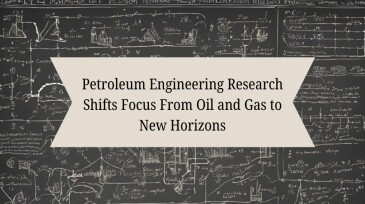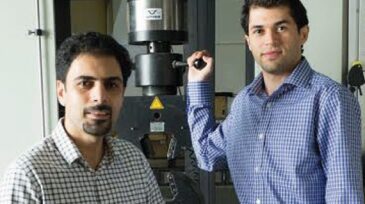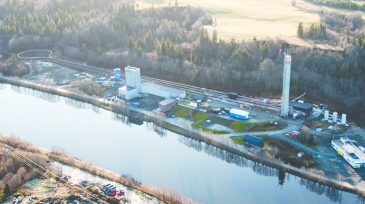university research
-
KTH researchers unveil a nickel–iron catalyst that speeds up water splitting, boosting efficient, sustainable hydrogen production.
-
The university's 142-ft multiphase flow loop tower is a 10-story engineering marvel pushing the boundaries of petroleum research in production operations, flow assurance, and safe offshore drilling.
-
The institute is tasked with accelerating the deployment and scaling of cost-effective climate technology.
-
A new type of porous material called a covalent organic framework quickly sucks up carbon dioxide from ambient air.
-
Undergraduate education in petroleum engineering has survived the latest downturn in the industry, and enrollment has started to show an uptick in numbers. However, a different trend is evident in graduate training and academic research: the number of researchers being trained in oil and gas topics is drastically dropping.
-
A study of a limited number of decommissioned oil and gas wells in England found no evidence of methane leaks, including four wells found to be leaking in an earlier study.
-
Researchers at Heriot-Watt University in Edinburgh, Scotland, are building replica core samples using 3D printers and installing sensors inside them as they go. Their goal is to directly monitor pore-scale flow behavior from the inside of these so-called “smart rocks.”
-
Researchers at the University of Texas at Austin (UT) have set an audacious goal to halve the time, cost, and number of rig personnel required for drilling every type of well, from unconventional shale to ultradeepwater.
-
Researchers at Rice University in Houston are hoping their new theory on composite properties may help the oil and gas industry reduce the time it takes to develop and test new materials.
-
Created by the Institute for Energy Technology in Norway in 1979, Olga was the oil and gas industry’s first transient multiphase flow model. A source of national pride, the program has been declared one of the country’s most important innovations in recent decades.
Page 1 of 2






![Hero_England decomm study Map[2].jpg](https://assets.spe.org/dims4/default/1340410/2147483647/strip/true/crop/1024x572+0+111/resize/365x204!/quality/90/?url=http%3A%2F%2Fspe-brightspot.s3.us-east-2.amazonaws.com%2Ff1%2Fa7%2Faf022d414b7fa6e8095a8c91b91e%2Fhero-england-decomm-study-map2.jpg)



